Three demon legends passed down on Mt. Oe
I learned about demon legends at the “Japan Oni Exchange Museum” on Mt. Oe!
Mt. Oe (altitude 833) is located at the base of the Tango Peninsula, but there is no single peak called Mt. Oe. The Oeyama mountain range is the general term for the mountains (Nabezuka, Hatogamine, Senjogatake, and Akaishigatake) that straddle Yosano Town, Fukuchiyama City, and Miyazu City in Kyoto Prefecture. Mt. Oe has been known as a dwelling place for demons since ancient times, and three demon legends have been handed down. On the hillside of Mt. Oe, there is a “Japan Oni Exchange Museum (Japanese Demon Exchange Museum)” (Oe-cho, Fukuchiyama City, Kyoto Prefecture) called “Oni no Sato”. About 60 minutes by car from Amanohashidate. Mt. Oe is also known as a sea of clouds spot.
Legend of “Hikoimasu-no-Kimi”
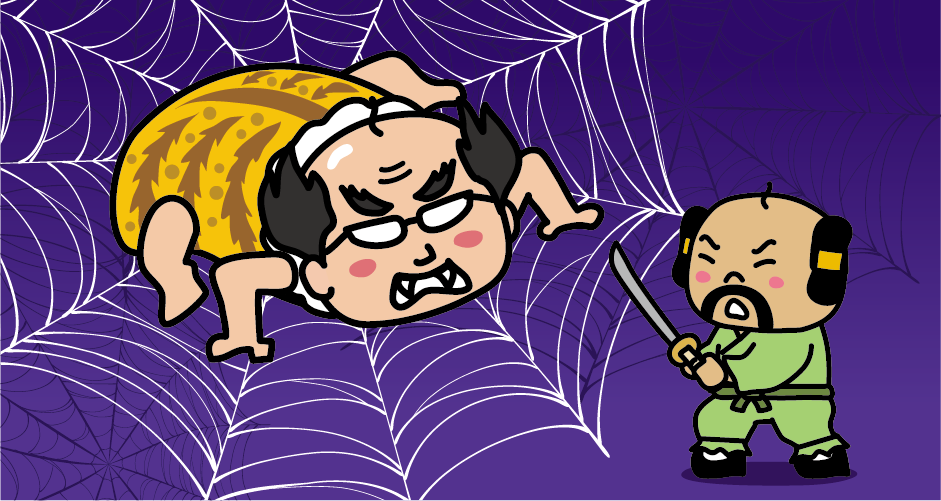
The first demon legend of Mt. Oe is the legend of “Hikoimasu-no-Kimi”, the prince of the 9th Emperor Kaika, which is also mentioned in the Kojiki. This demon is called Tsuchigumo (The Demon Spider), and according to legend, Hikoimasu-no-Kimi exterminated the leader of the demon, “Kugumimi-no-Mikasa”. In Oe-cho, Fukuchiyama City and surrounding areas, there are many place names derived from this demon legend.
Legend of “Prince Maroko”
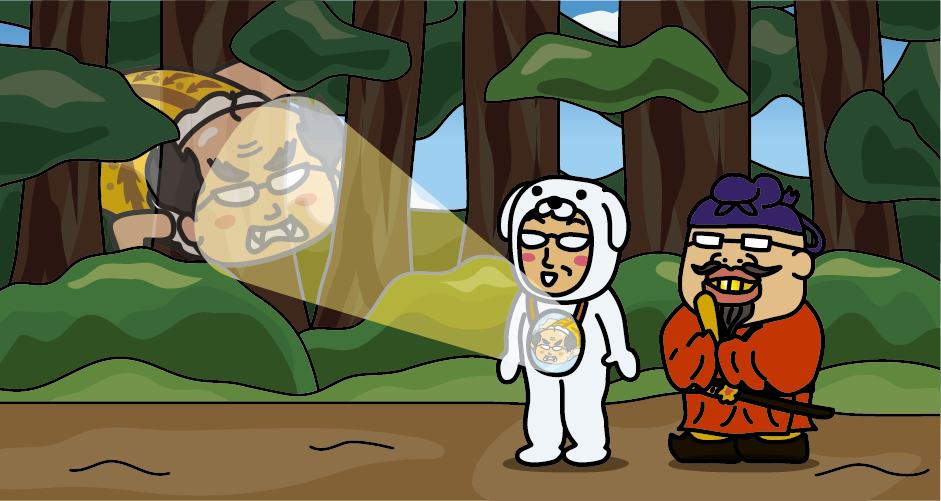
The second is the legend of Prince Maroko, a son of the 31st Emperor Yomei and a younger brother of Prince Shotoku, who exterminated three demons called Eiko, Ashigaru, and Tsuchikuma. In this demon legend, a white dog with a mirror around its neck appears under the blessings of the gods and Buddha and uses the mirror to find the three demons hiding in the area, furthermore, such as Prince Maroko’s inviting the inner and outer shrines from the Ise Jingu Shrine, and donating seven temples in gratitude for the success of the extermination of the demons, there are many episodes that have been handed down.
Legend of “Shutendoji”
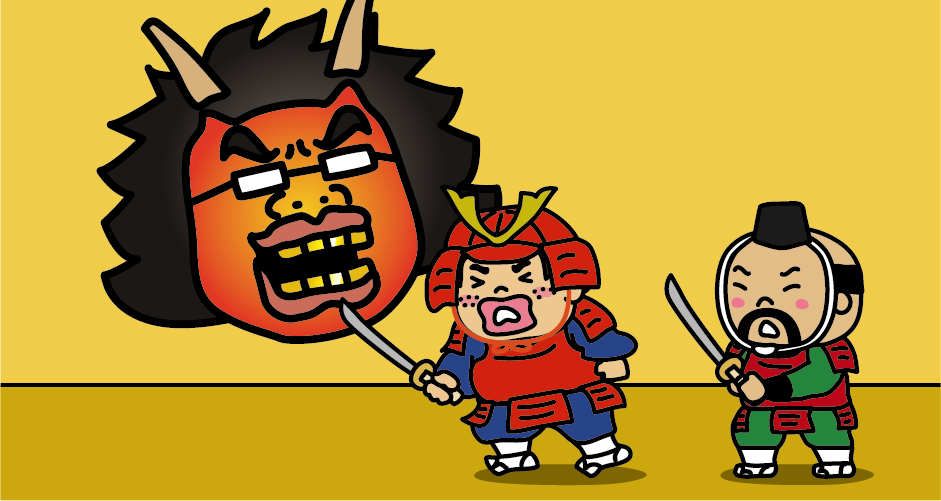
The third is the legend of “Shutendoji”, which became widely known in “Otogi Zoshi” and is also used in Noh and Kabuki plays. Shuten-doji is the leader of the demons who live in Mt. Oe and threaten the capital. According to legend, during the reign of the 66th Emperor Ichijo, an imperial decree was issued to exterminate Shuten-doji. Minamoto no Yorimitsu, his Four Heavenly Kings, and Fujiwara no Yasumasa disguised themselves as mountain priests and climbed Mt. Oe. After reassured Shuten-doji, Minamoto no Yorimitsu made Shuten-doji drink poisonous Sake given to him by the gods, pushed him to the point where he could not move, and decapitated Shuten-doji. Shuten-doji is said to have bitten Minamoto no Yorimitsu’s helmet even after he was beheaded.

By the way, Shuten-doji spent three years in his mother’s womb, and it is said that he was born with teeth and hair, and was able to walk and talk immediately. It is said that he was a heavy drinker and looked like a child, so he was called Shuten-doji by the demons under his command. Shuten-doji means child drinking alcohol in Japanese.
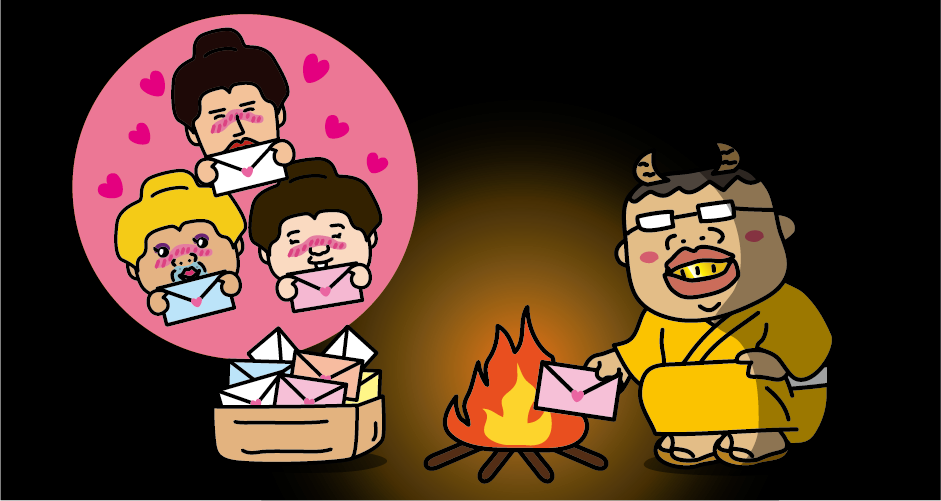
As for how Shuten-doji became a demon, Shuten-doji received love letters from many women because he was a handsome boy. But because he burned them all without reading them, there is a legend that it turned into a demon because of the grudges of women. in addtion, there are several legends, such as Shuten-doji, who entered Enryakuji Temple on Mt. Hiei as a child, became a demon because the demon mask he wore during the festival stuck to his face and could not be removed.
Japan Oni Exchange Museum
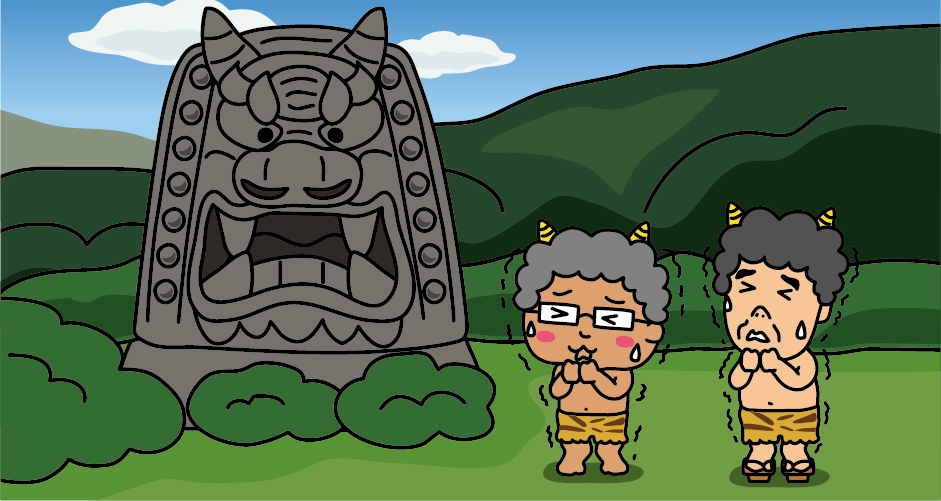
On the hillside of Mt. Oe (Oe-cho, Fukuchiyama City), there is the “Japan Oni Exchange Museum (Japanese Demon Exchange Museum).” It is a museum where you can learn anything about demons, as materials on demons collected from all over the world as well as in Japan are on display. In the front yard, a huge 5m high ridge-end tile like a gargoyle called “Heisei no Oni gawara” is glaring.
Highlights around Onidake Inari Shrine
Demon object
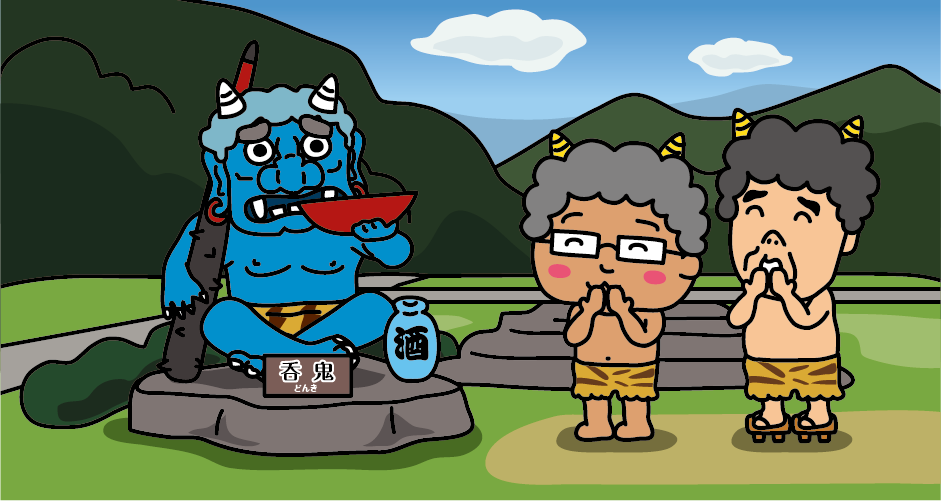
In the area from the “Japan Oni Exchange Museum” to Onitake Inari Shrine, there are novel demon objects and ruins related to demons such as “Oni no Ashiato (Demon’s Footprints)” and “Raikou no Koshikakeishi (The stone on which Minamoto no Yorimitsu sat. He was called Raikou)”.
Sea of Clouds in Mt. Oe
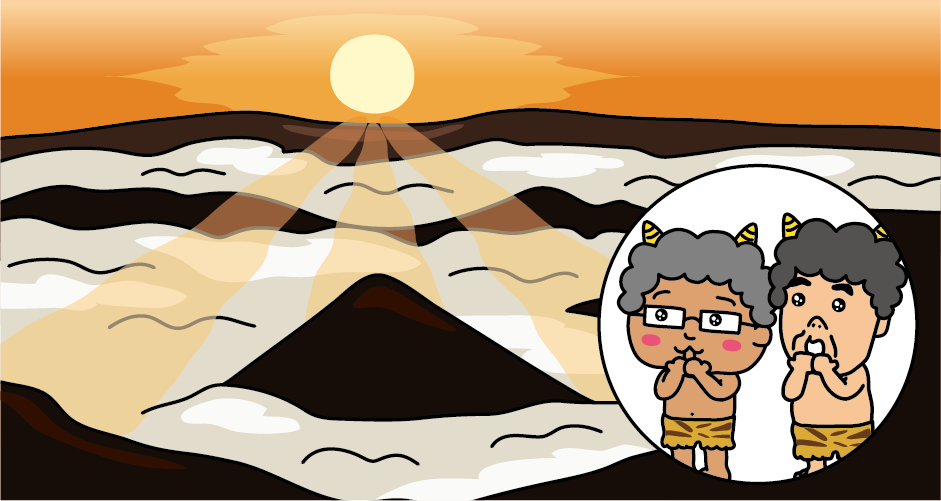
Mt. Oe in late autumn is known as a spot of beautiful sea of clouds. From November to December, a sea of clouds occurs when the air cools in the early morning when the temperature difference from the night before is large. The scenic point is Onitake Inari Shrine, which is enshrined at the 8th station of Mt. Oe.
Access to Mt. Oe (Japanese Oni Exchange Museum)
From Tokyo
It takes about 2 hours and 30 minutes from JR Tokyo Station to JR Kyoto Station by Tokaido Shinkansen.
From Osaka
It takes about 15 minutes by Tokaido Shinkansen from JR Shin-Osaka Station to JR Kyoto Station.
At JR Kyoto Station, transfer to the JR Sanin Main Line (limited express) to JR Fukuchiyama Station in about 1 hour 30 minutes. At JR Fukuchiyama Station, transfer to the Kyoto Tango Railway Miyafuku Line to Kyoto Tango Railway Oe Station in about 25 minutes.Get off at Oe Station, and from Oe ekimae bus stop, it takes about 20 minutes by local bus to Oe Yamanoie bus stop. Get off at Oe Yamanoie bus stop, a shirt walk.




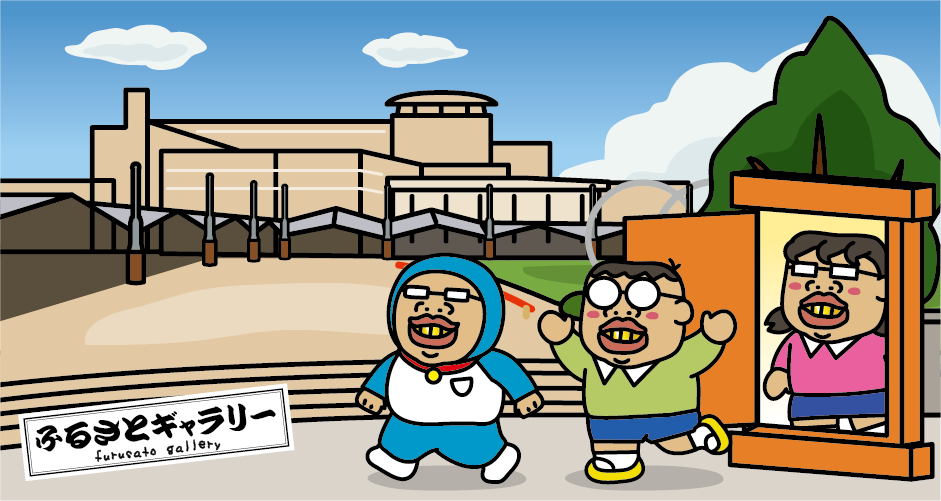

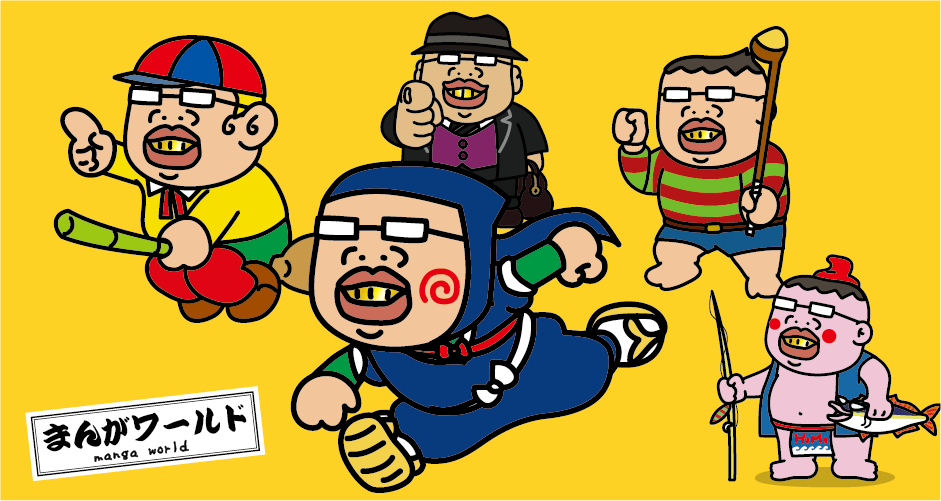
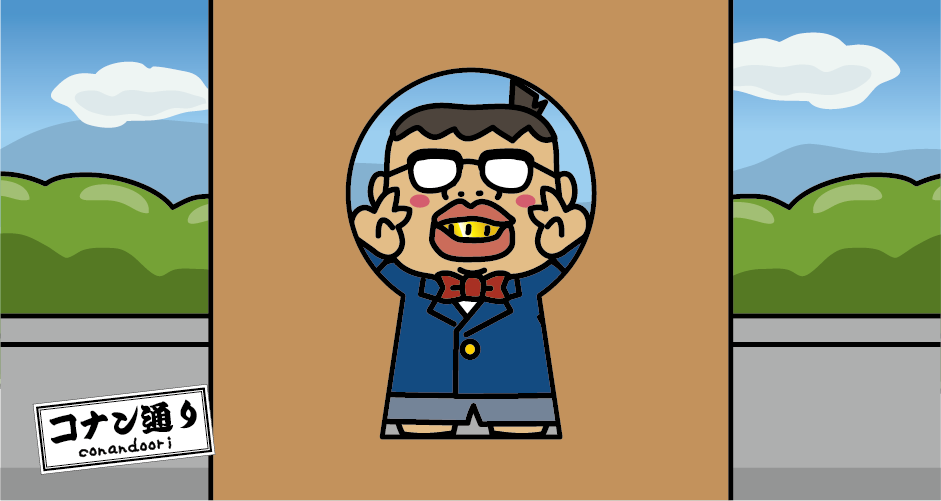


You need to login to comment on an article.